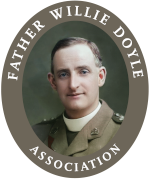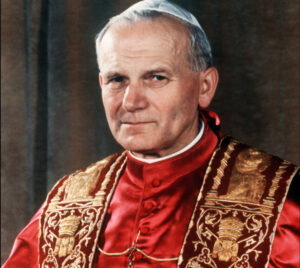When it was not some infirmity or other than caused him to experience pain, it was he himself who inflicted discomfort and mortification on his own body. Aside from the prescribed fasting, which he followed with great rigour, especially during Lent, when he reduced his nourishment to one complete meal per day, he also abstained from food before ordaining priests and bishops. And it was not infrequent for him to spend nights lying on the bare floor. His housekeeper in Cracow realised it, even though the archbishop crumpled his bedclothes to conceal it. But he did more. As a number of members of his closest entourage heard with their own ears, in Poland and the Vatican, Karol Wojytla flagellated himself. In his bedroom closet, among his cassocks, hanging from a hook was an unusual trouser belt that he used as a whip and always brought to Castel Gandolfo.
Today is the feast of St John Paul. The above testimony is from Monsignor Slawomir Oder, the Postulator for the cause of canonisation of St John Paul II. This is the pope who attracted so many young people. Yet he lived a rigorous life of penance. So rigorous, in fact, that others heard him flagellating himself. And he used an unusual trouser belt. It’s not clear why it was unusual. Was it because it was modified in some way to make it more painful?
Fr Doyle’s life of penance is not be something we are called to imitate in its totality today, but it was entirely in conformity with the tradition of the Church, and is mirrored in the lives and teachings of the saints, including the joyful and popular St John Paul II.
It would be bizarre for anybody to over-emphasise the role of physical penance in the life of St John Paul II, and to reduce his personality to one aspect of his spiritual life. So, too, those who think that Fr Doyle’s penance would turn people away from him do him a disservice, and foster an unbalanced image of a very human, very joyful and very self-sacrificing war hero.

